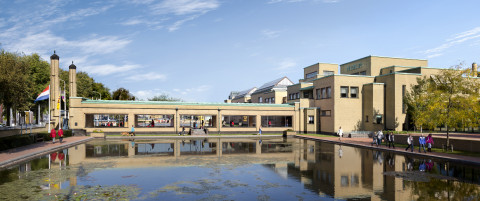
Visit
Visit the Kunstmuseum The Hague. See our openinghours, entrance fees and read about other practical info.
Kunstmuseum Den Haag has a treasure chamber of over 160.000 pieces of art. Here we work on making the highlights from this collection available online.
During the First World War, the Netherlands remained neutral while Europe was going up in flames. There seemed little sign of hope for the future. Yet it was precisely at that time of hostilities that the neutral Netherlands gave birth to one of the most important new art movements: De Stijl.
Ever since 2011, the Kunstmuseum has had a complete wing devoted to Mondrian & De Stijl. After a brief interruption necessitated by the major exhibitions during the nationwide Mondrian to Dutch Design theme year, the displays in the dedicated wing are now being reinstalled. From 30 September 2017 you can visit the wing to find out all about the innovative impact of De Stijl and Piet Mondrian’s unique path to abstraction.
While many people imagine that De Stijl was cold and humourless, as if its art was made with a ruler on a drawing board, the exhibits in the special wing show that the opposite is true. Using vivid primary colours (red, yellow and blue), members of the movement produced vibrant works of art that are unconstrained and joyful, reflecting a vision of the future that was optimistic in the extreme. The displays include work not only by the movement’s founder Theo van Doesburg and by Piet Mondrian, but also by Vilmos Huszár, Bart van der Leck, J.J.P. Oud, Gerrit Rietveld, and others.